Figures & data
Figure 1. Geographical distribution of TCZ and non-TCZ cities.
Notes: This figure shows the geographical distribution of TCZ and non-TCZ cities in China. The dark red, light red, and white regions are ARCZ, SPCZ, and non-TCZ cities, respectively.
Source: “The Official Reply of the State Council Concerning Acid Rain Control Zones and Sulfur Dioxide Pollution Control Zones”.
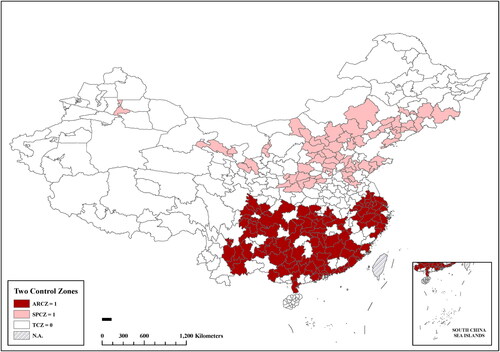
Figure 2. The difference in emission reduction between TCZ and non-TCZ cities.
Notes: This figure plots the distribution of emission reduction (log) of industrial enterprises in TCZ and non-TCZ cities in the year when the TCZ policy was issued and ended.
Source: China Environmental Statistics Database in 1998 and 2010.
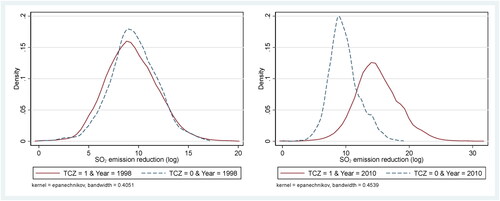
Table 1. Summary statistics.
Figure 3. Checks on the identification assumption with the city-level data.
Notes: This figure illustrates the time trend of the number of total and industrial employees in TCZ and non-TCZ cities during the period from 1994 to 2006.
Source: China City Statistical Yearbook, various years.
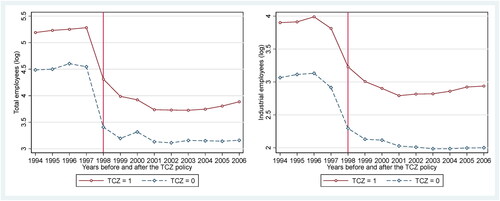
Figure 4. Checks on the identification assumption with the raw data.
Notes: This figure shows the number of averaged employees in TCZ and non-TCZ cities over time and that across industries with high/low emission levels in the two groups of cities.
Source: Sample data in this paper.
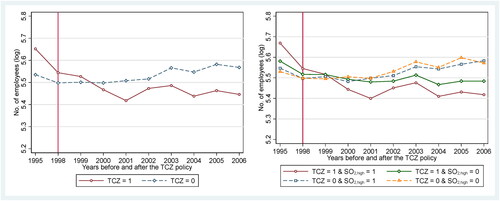
Table 2. Main results: DiD specification.
Table 3. Main results: DDD specification.
Figure 5. Event-time estimates on labor demand before and after the TCZ policy.
Notes: Plotted are event-time estimates with our preferred setting for the state- and non-state-owned enterprises. The solid line captures the time course of the difference in firms’ labor demand between treatment and control groups. The dashed lines represent the 95% confidence intervals.
Source: Sample data in this paper.
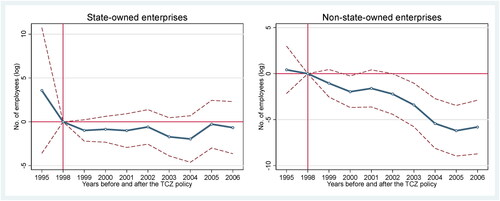
Table 4. Heterogeneity across firm ownership types.
Table 5. Heterogeneity across control zone types.
Table 6. Robustness checks.
Figure 6. Distribution of estimates and t-statistics in the randomization test.
Notes: This randomization exercise is repeated 500 times and the resulting estimates and t-statistics are plotted. The red line marks the position of t-statistic for our benchmark estimate. Share is the percentage of t-statistics that is larger than the actual one.
Source: Sample data in this paper.
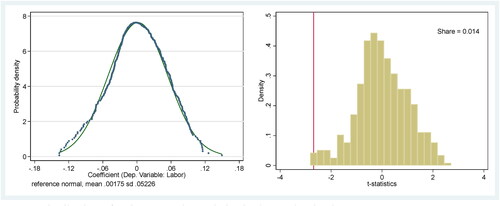
Figure 7. Temporal and spatial distribution of employees in multi- and one-unit enterprises.
Notes: Plotted is the annual average number of employees (log) in TCZ and non-TCZ cities across multi- and one-unit enterprises, respectively.
Source: Sample data in this paper.

Table A1. A glossary of technical terms and abbreviations.
